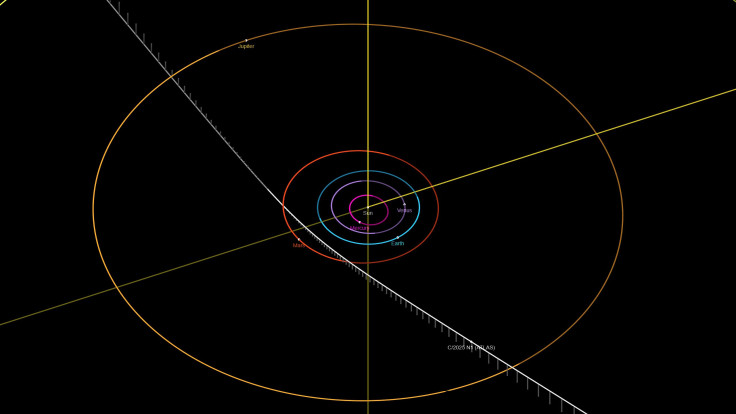Alien Activity? Experts Explain Why 3I/ATLAS Comet's 'Debris Plume' Is Not Visible
The comet's tail suddenly became invisible after crossing perihelion

The 3I/ATLAS is an interstellar comet that passed through the Earth's solar system in 2025. New captured images of the 3I/ATLAS on 5 November 2025 suggests the comet has lost its tail, or its 'debris plume', after moving away from the sun.
The Comet That Made Recent Headlines
3I/ATLAS is officially the third known interstellar object to cross our solar system which made headlines on sites such as NASA and Smithsonian Channel because of its nature. These comets are considered unique because they came from outside of our solar system, and there are only three of them, so far.
Discovered last 1 July 2025, it was racing through space at about 130,000mph and passed perihelion, its closest point to the Sun, on 29 October. Observers and astronomers expected a classic dust tail or a trail of debris behind the nucleus, which should be visible once it began getting away from the Sun.
However, images taken by the R. Naves Observatory in Spain and telescope captures from Qicheng Zhang of the Lowell Observatory in Arizona show no debris plume at all.
Did Aliens Cause the Fading of Its Tail?
Various outlets, such as The Daily Jagran and The Economic Times were quick to create headlines that connected the disappearance of its tail to alien life, even citing theories that it might be an 'alien spacecraft' and not just a comet after all.
However, in the same reports, it was debunked and there were scientific explanations that caused the tail's disappearance which eventually connected to its distance, technology and space science calculations.
Where Is the Tail?
According to The Daily Jagran's report, experts and astronomers explain that the 'missing' tail of 3I/ATLAS is most likely due to the geometry of the comet's orbit relative to Earth and the Sun. The new photographs of the comet were captured at an angle only about ten degrees away from the Sun, which means that the sun's solar glares might have erased the comet's already faint trail.
In short, this is a case of 'we're just looking the wrong way', not aliens causing the tail's disappearance. The captured images also show that the interstellar object remains intact and stable, indicating that no external forces are causing it to disintegrate or destroy Earth.
No Aliens, but Here's What's To Expect
Zhang confirmed that the comet is visible through amateur telescopes but 'it won't look very impressive', adding that it is 'just a smudge, but an increasingly visible smudge over the next few days'.
3I/ATLAS is expected to continue its voyage of our solar system, and will pass through Jupiter in March 2026, according to NASA. It will continue on its way until it gets out of the solar system, therefore, clearing any worries that it might hit Earth.
Overall, the apparent disappearance of debris plume behind 3I/ATLAS is not a call for any UFO, alien or extraterrestrial life hypothesis. The incident simply explains the tricky dynamics of celestial geometry, angle and solar brightness interfering with our view. Researchers are clear, it is simply observational science at work.
© Copyright IBTimes 2025. All rights reserved.






















